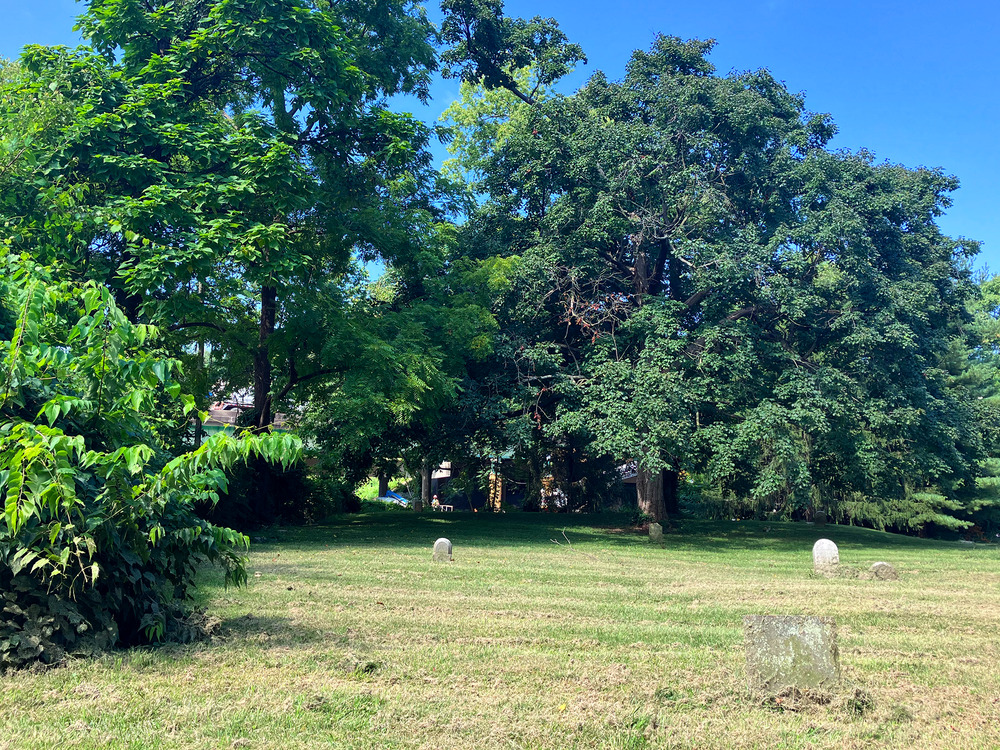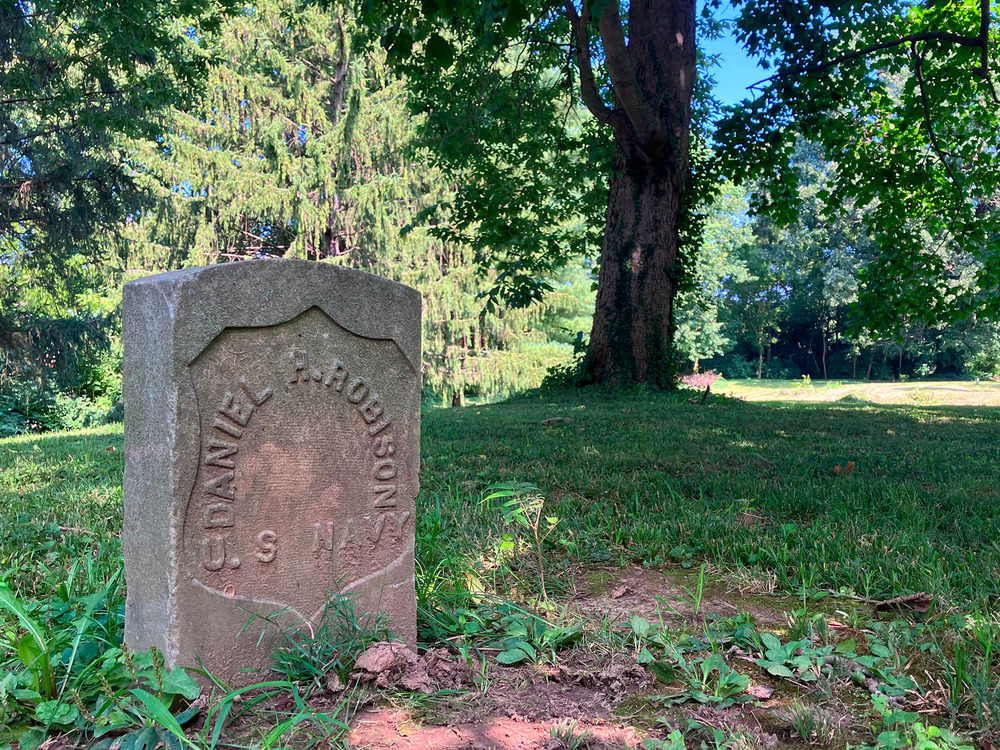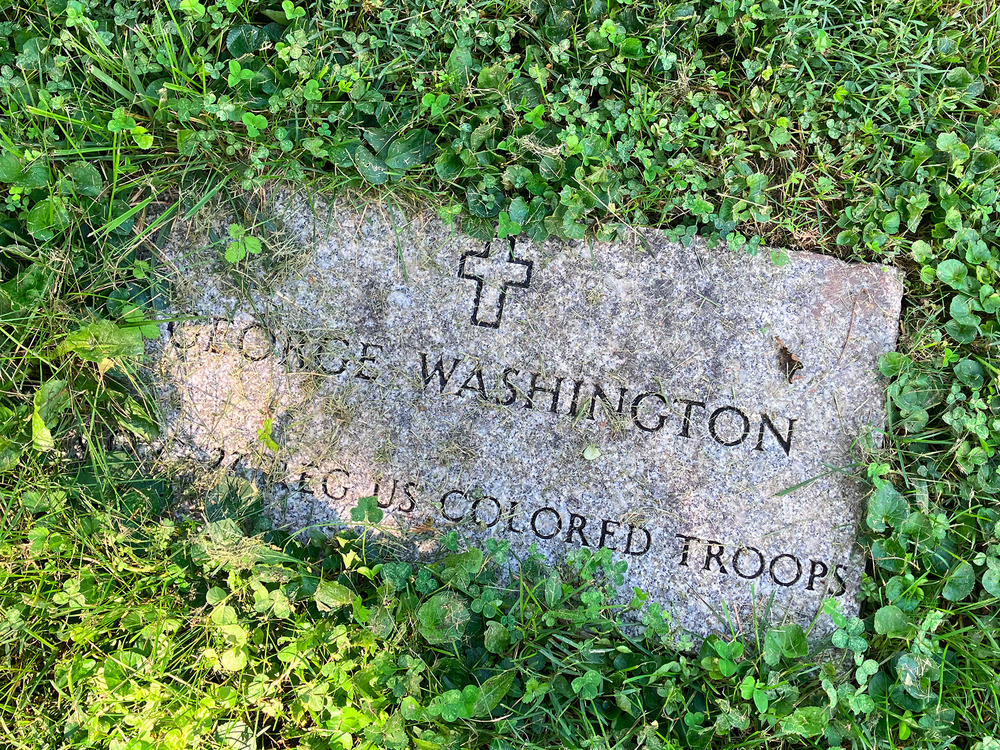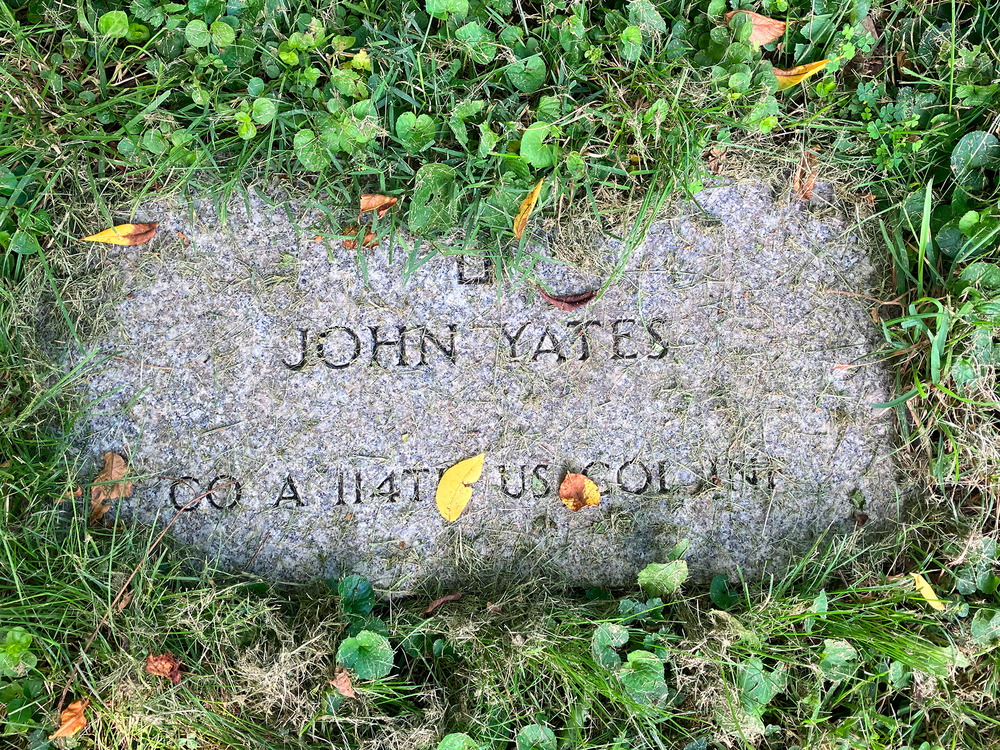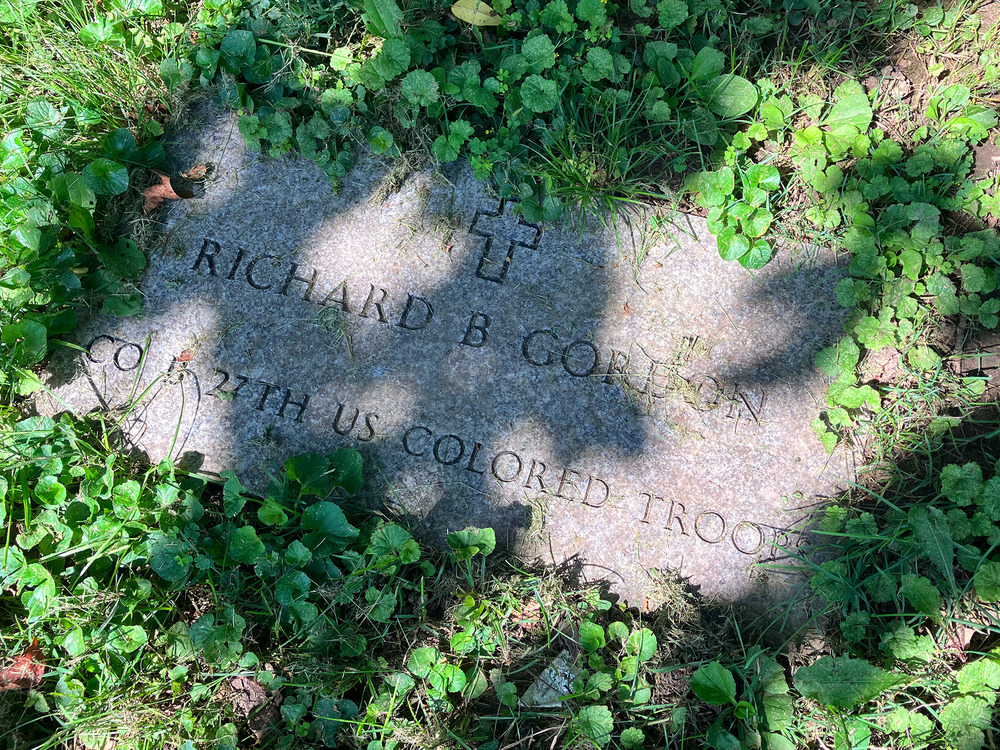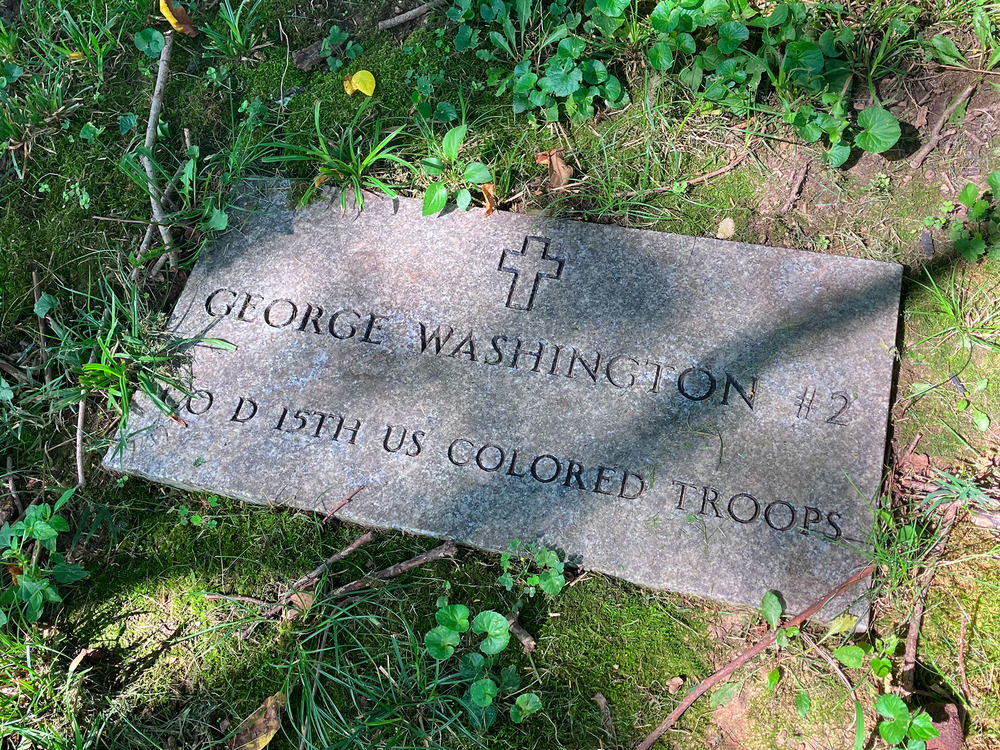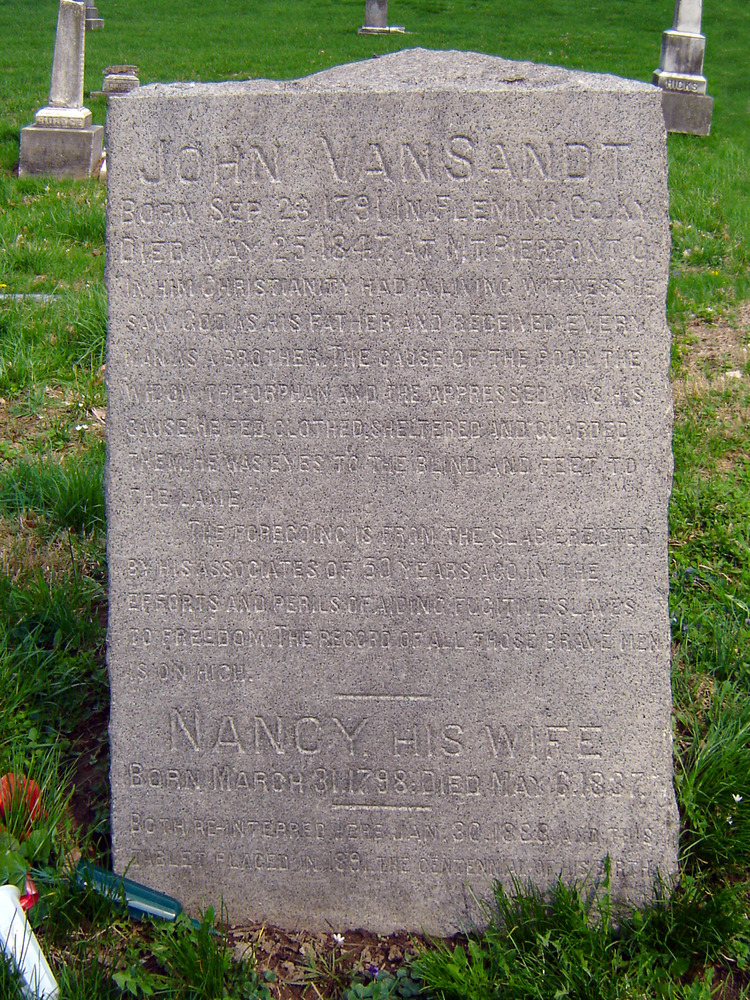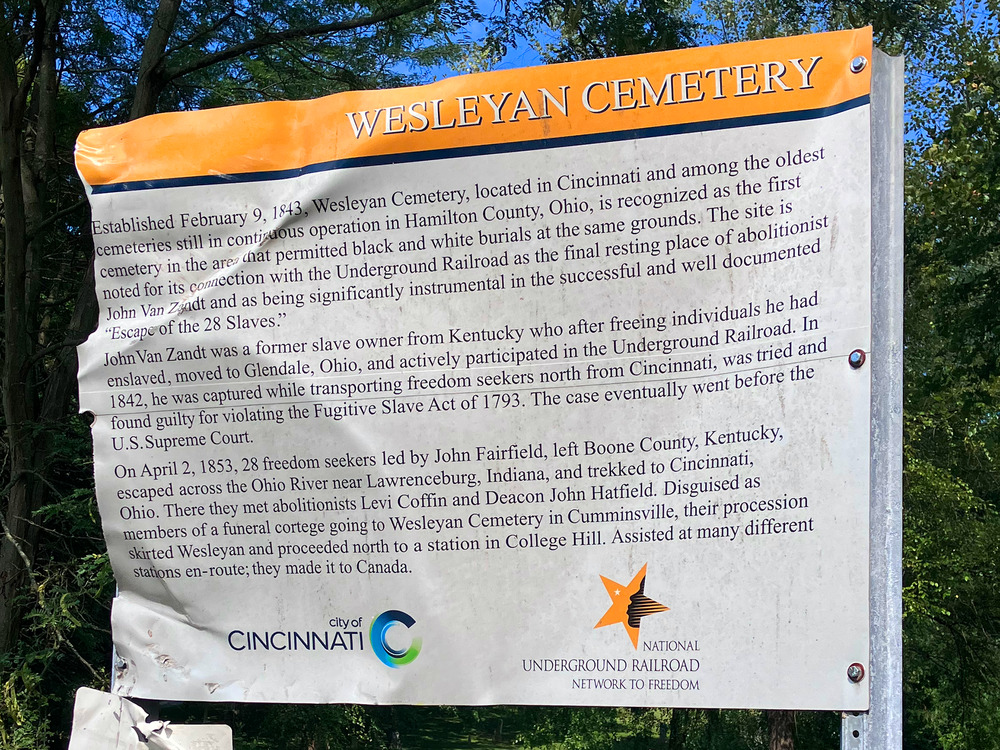Wesleyan Cemetery
First Racially Integrated Cemetery in Hamilton County and Important Site of Abolitionist and Black Civil War Veteran Burials
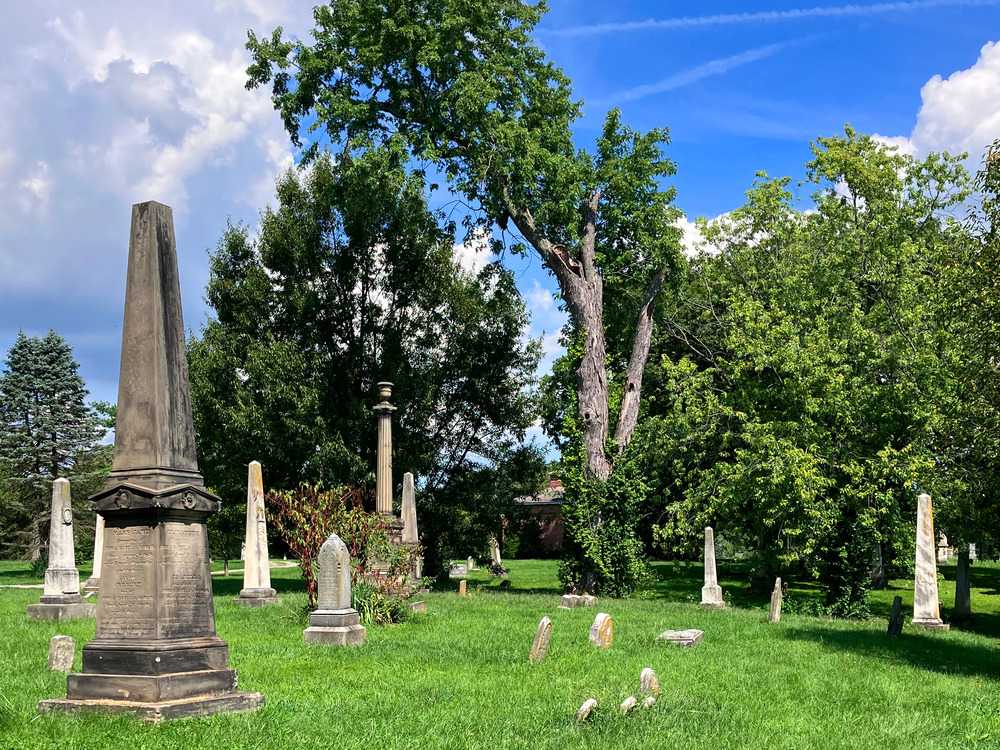
Wesleyan Cemetery was founded in 1843 by the Methodist Church, which purchased approximately 25 acres for the facility in what was then Millcreek Township (now the Cincinnati neighborhood of Northside), on Colerain Ave. adjacent to Mill Creek. Bodies from other cemeteries were moved to this one from downtown.
This is the oldest continually operating cemetery in Hamilton County where burials still take place . It was the first racially integrated cemetery in Hamilton County by which both blacks and whites were buried within the cemetery boundaries. It was also the first cemetery in Cincinnati designed in a park-like fashion, with winding drives, picturesque trees and plantings (predating the similarly designed Spring Grove Cemetery by two years).
Wesleyan Cemetery was the first in Cincinnati to keep and maintain records of its burials and grounds. Among the approximately 17,000 graves are several prominent local abolitionists and over 1,000 military veterans, including Black Civil War soldiers. The cemetery also figured into the famous Escape of the 28.
The grave of Black Civil War veteran Daniel Robison was the only one to receive a marker before contemporary conservation efforts. It is located in the Colored Grounds section of the cemetery. Several other Black Union soldiers are buried here, near a mature maple tree.
John Van Zandt (“Van Sandt,” according to his tombstone) is believed to have been the model for Harriet Beecher Stowe’s character of John Von Trompe in her book Uncle Tom’s Cabin. He was a slave-owning farmer in Kentucky who, after a dream, freed his slaves, moved to Ohio and was ordained as a Methodist minister. Van Zandt became a major conductor on the Underground Railroad. He is believed to have sheltered Eliza Harris (the Eliza of Uncle Tom’s Cabin) in his Glendale home on her way to freedom in Canada.
In 1842, Van Zandt was caught for concealing and aiding a group of eight freedom-seekers. His case made its way to the Supreme Court, where he was represented pro bono by Salmon P. Chase and William H. Seward (later President Lincoln’s Secretary of State). He lost, his farm was sold to help pay the fine, and he was excommunicated by his church. He passed away in 1847. Van Zandt's remains were moved from Glendale to Wesleyan Cemetery and, in 2005, he was posthumously reinstated by his church.
Another important burial in this cemetery is Rev. Henry Hathaway. His home, Hathaway Hall, was located in West Covington, on the banks of the Ohio River. This is believed to have been an important stop on the Underground Railroad, as a tunnel connected the house to the river, where freedom-seekers would be rowed to the Ohio side.
A third important local abolitionist buried here is Zebulon Strong. He built and lived in two different homes on Hamilton Ave. in College Hill. Freedom seekers, traveling north on or near Hamilton Ave., hid in the ravine seen from the backs of these homes (down in what is now LaBoiteaux Woods), and Strong would welcome them and hide them in his wagon, facilitating their journey to the next Underground Railroad stop in Mt. Healthy.
Wesleyan Cemetery also played an important role in the Escape of the 28, the well-documented 1853 journey of 28 freedom seekers from Petersburg in Kentucky's Boone County, who hired John Fairfield to help them on their way to freedom. They crossed the Ohio River into Cincinnati. Because the group was so large, they hid in plain sight by posing as a procession of free Black funeral attendees on their way to Wesleyan Cemetery.
The group then traveled to College Hill and onward through Ohio and into Indiana, where they narrowly missed the slave-catchers who had been pursuing them. Traveling north to Michigan, they arrived in Detroit, where the group was met by 200 people and three wagons full of donated necessities. Freedom was finally theirs the following morning upon disembarking in Windsor, on the Canadian side of the Detroit River.
Wesleyan Cemetery is currently maintained by the City of Cincinnati. Efforts to maintain its grounds and to restore tombstones are ongoing. It appears that recent fundraising efforts by the community, as well as the Veterans' Administration's permission, have resulted in markers for at least some of the previously unmarked graves of Black veterans in the Colored Grounds area of the cemetery.
Images

